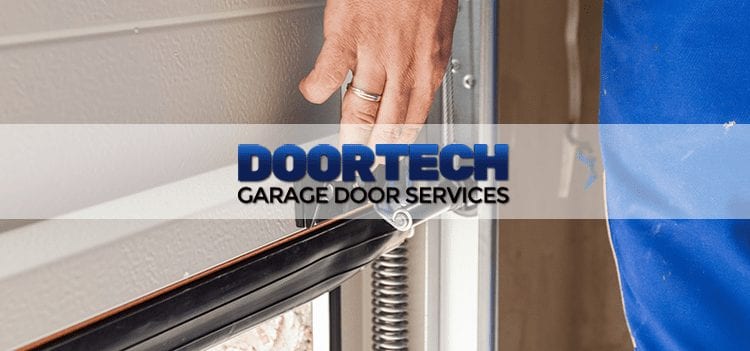How to Test Your Own Garage Door Springs

Did you know that your garage door springs will let you know when they are ready to be replaced? Here is a quick way to test whether the springs on your garage door are ready to be maintained or replaced.
First release the door from the Opener. This is commonly done by pulling the red handled emergency release cord.
Next open and close your door manually a few times. Did your springs squeal or whine? Did you hear any squeaking noises? If so, your springs need to be lubricated. Door Tech Garage Door Services recommends clear silicone spray from your local hardware store. Lubricating your hinges once per year will extend the garage door spring’s life.
Finally, to test if your springs need replacing. Lower your door to approximately 2 feet from the ground. Now let go of your door. If your door stayed in place that is a good indication that your springs are still in great shape. If the weight of your door caused it to lower, then you need to consider replacing your springs. If the door sagged even a little of feels heavy to pull back up, then your springs are nearing their end, and are likely causing additional wear and tear on your Opener.
Why Do My Springs Where Out?
Garage door torsion springs do wear out, and replacing them a few times during the lifetime of a residence is common practice. The average lifecycle of garage door springs is approximately 10,000 open and closes. A busy family can open and close their garage several times per day only allowing a few years of life for the springs. If your door is considered on the heavy side, then your springs may even have a shorter life cycle. When replacing springs on heavier doors Door Tech Garage Door services recommends using a heavy-duty torsion spring rather than a standard replacement.
Rust is another major culprit of garage door spring failure. Often the buildup of the rust causes a tremendous amount of additional friction causing the springs to fail at a much faster rate. You can prevent the build of rust by routinely lubricating your springs with clear silicone spray approximately once or twice per year. If you already have a rusty build up on your springs, consider repair sooner rather than later as you do not want to end up with a complete spring failure.
